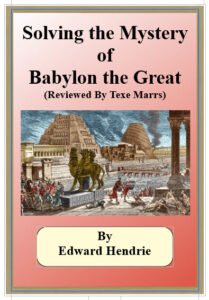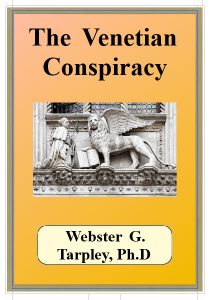- Architecture of Power
- Babylon The Great
- Hekiand - Saxon Gospel
- Holocaust Lie
- John Bunyan
- Last Secret WW2
- Venetian Conspiracy
BOOKS ON THE CITY OF LONDON AND THE SECRET POWER IT WEALDS OVER THE UK AND THE REST OF THE WORLD ARE HARD TO COME BY, so it is pleasing to see a new book on the subject has now been published, The Architecture of Power, by Robert Shaw. Available at a reasonable price from Britains Hidden History
The author’s great find, the Parliamentary report on the fire that swept London in 1666, confirms what many have suspected that it was no accident, but another false flag, The enemy has used the same ploy down the centuries and it works every time, because people ignore to study their history. The apprehension of incendiary planters by the King’s Guards and then not being heard of again, would imply that they were in the employ of the King, which is the author’s view. However, when one has an understanding of the ruthlessness of the enemy, its more likely that the King was manoeuvred into this act of destruction or even done without his knowledge as they control the levers of power.
Both James I and Charles I were controlled by their favourites, so it is unlikely things would be any different under Charles 2, bearing in mind during the interregnum period, Charles, for the most part was a pauper. There would be a heavy price to pay for the finance necessary to regain the throne, and that would be to facilitate the rebuilding of the City in the enemy’s image with total disregard to the poor people living in Cheapside.
In the rebuilding of London, the author goes into fascinating detail, especially the churches that Hawkesmoor built, and the significance of their alignment to form the eye of Horus. This is signifying to the world that “Big brother is watching you”! It was one of the Cities ruling elites that once stated “there is no secret which is not unknown to us”! Most of the civilised world has sleep walked into captivity and again become slaves of Egypt and Babylon(don).
ATTORNEY AND CHRISTIAN RESEARCHER EDWARD HENDRIE investigates and reveals one of the greatest exposes of all time–-a book you don’t want to miss.
Solving the Mystery of Babylon the Great is packed with documentation. Never before have the crypto-Jews who seized the reins of power in Rome been put under such intense scrutiny.” Texe Marrs, Power of Prophecy. The evidence presented in this book leads to the ineluctable conclusion that the Roman Catholic Church was established by crypto-Jews as a false “Christian” front for a Judaic/Babylonian religion.
That religion is the core of a world conspiracy against man and God. That is not a conspiracy theory based upon speculation, but rather the hard truth based upon authoritative evidence, which is documented in this book. Texe Marrs explains in his foreword to the book: “Who is Mystery Babylon? What is the meaning of the sinister symbols found in these passages? Which city is being described as the ‘Great City’ so full of sin and decadence, and who are its citizens?
Why do the woman and beast of Revelation seek the destruction of the holy people, the saints and martyrs of Jesus? What does it all mean for you and me today? Solving the Mystery of Babylon the Great answers these questions and more. Edward Hendrie’s discoveries are not based on prejudice but on solid evidence aligned forthrightly with the ‘whole counsel of God.’ He does not condone nor will he be a part of any project in which Bible verses are taken out of context, or in which scriptures are twisted to mean what they do not say.
THE HELIAND: THE SAXON GOSPEL IS A SAXON REINTERPRETATION OF THE MESSAGE OF JESUS CHRIST into a fashion that the proto-Vikings could comprehend. Much in the same way the Gospel of St. Mark was written to accommodate a Greek audience, and the Gospels of St. Matthew and St. Luke to accommodate Hebrew audiences, the Heliand was written to adapt Christianity to people who had very little connection with the Mediterranean world.
This text is beginning to experience a revival as of late among dissident right-wingers seeking a way to better understand folkish religion. It should be of prime importance that Christians be familiar and (if possible) well-versed with the text in order not only to better understand their own folkish traditions and identity, but also to help bring identitarians struggling with the vapidness of modern, liberal Christianity into a deeper understanding of the faith.
History of the Text
The Heliand, meaning “saviour,” was written sometime in the eighth century after Charlemagne conquered the Saxon pagans of northern Germany. Nobody is sure who exactly wrote it, but it was probably written by a monk or missionary who was both literate and intimately familiar with north German culture, customs, and language.
OVER THE YEARS, I have garnered much information. I noticed this one as I was eliminating “old news”, and I find it’s a pretty good analysis of the history of the last century––plain and simple. Most of this information is GONE on the Internet, but, luckily, it sits in files here and there for people to be educated on.
Yes, it’s long–-but history is long, but much of it has been hidden. If one takes a small stretch of time to read over these things, they will have a good handle on the main events which have brought us to where we are today…..after all, it’s all “by Yahweh’s design”…
(From a Letter in The Gentlemen’s Magazine )
IT is stated in the Life of Bunyan by the late Mr. Southey, that the first edition of the Pilgrim’s Progress had not then been discovered, although much search had been made after it. I therefore about twelve years ago wrote to Mr. Southey stating that I would procure a copy if possible, and I sent him some information relative to a supposed signet ring of Bunyan’s, (which was found on taking down the old bridge at Bedford, upon which the toll-house stood in which Bunyan was imprisoned,) and also some anecdotes respecting him, and a drawing of the bridge and toll house, all which Mr. Southey said he would avail himself of should he ever publish a second edition of the life.
Since that time I have frequently endeavoured to procure the first edition as a literary curiosity, and an elderly lady of this city has lately presented me with an old duodecimo copy of the work, which, if not the first, is one of the early editions. The following are the particulars of it. The title-page and also part of “the Author’s Apology for his Book,” are lost. It begins with:-
“Why, what’s the matter? It is dark; what tho’?
But it is feigned; what of that?
I tro some men by feigned words,’’ &c. &c.
Martin Bormann, who signed Hitler’s pay cheque and knew every thing about the Nazi war effort, was an Allied spy.
THE BOOK “OP JB” (1996) BY JOHN AINSWORTH-DAVIS DESCRIBES HOW HE AND IAN FLEMING RESCUED BORMANN FROM THE RUINS OF BERLIN IN 1945. James Bond was modelled on Ainsworth-Davis who was an Illuminati sex slave and mass murderer. He may have serviced the gay Winston Churchill and his spy master Desmond Morton.
This book is the smoking gun that proves the Second World War was a charade. While most Nazis were sincere, the movement was sponsored and controlled at the top by the Masonic Jewish central bank cartel in order to kill “goyim” on both sides, increase banker wealth and power, destroy Germany, and advance world government. Assimilated Jews were also sacrificed to disguise the Gentile holocaust and to create the Jewish state as HQ of the NWO.
PERIODS OF HISTORY MARKED, LIKE THE ONE WE ARE LIVING THROUGH, by the convulsive instability of human institutions pose a special challenge for those who seek to base their actions on adequate and authentic knowledge of historical process. Such knowledge can come only through viewing history as the lawful interplay of contending conspiracies pitting Platonists against their epistemological and political adversaries.
There is no better way to gain insight into such matters than through the study of the history of the Venetian oligarchy, the classic example of oligarchical despotism and evil outside of the Far East.
Venice called itself the Serenissima Republica (Serene Republic), but it was no republic in any sense comprehensible to an American, as James Fenimore Cooper points out in the preface to his novel The Bravo. But its sinister institutions do provide an unmatched continuity of the most hideous oligarchical rule for fifteen centuries and more, from the years of the moribund Roman Empire in the West to the Napoleonic Wars, only yesterday in historical terms. Venice can best be thought of as a kind of conveyor belt, transporting the Babylonian contagions of decadent antiquity smack dab into the world of modern states.
The more than one and one-half millennia of Venetian continuity is first of all that of the oligarchical families and the government that was their stooge, but it is even more the relentless application of a characteristic method of statecraft and political intelligence. Venice, never exceeding a few hundred thousand in population, rose to the status of Great Power in the thirteenth century, and kept that status until the Peace of Westphalia in 1648, thanks to the most highly developed system of embassies, of domestic and foreign intelligence, and related operational potentials.






